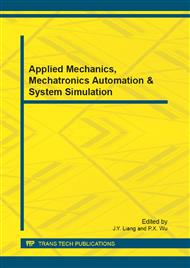p.672
p.678
p.683
p.688
p.692
p.696
p.701
p.707
p.713
Noise Level Prediction by Combination Sound Signal
Abstract:
In the paper, a new method for accuracy noise monitoring method is presented in detail. Noise level estimation and together two vibration signals have been used to predict the noise level. The results show that the sound signal method can effectively improve the accuracy of noise monitoring, which can be very useful for further research and noise control. This method is very convenient in the testing workshop.
Info:
Periodical:
Pages:
692-695
Citation:
Online since:
September 2012
Authors:
Keywords:
Price:
Сopyright:
© 2012 Trans Tech Publications Ltd. All Rights Reserved
Share:
Citation:


